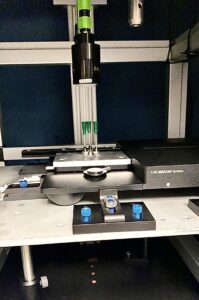Details Information
Development of Low-Noise Stimulus Hardware for Studying Vertebrate
Magnetoreception
Neurophysiology
2020-2022
St. Olaf College, Minnesota, USA.
Magnetoreception:
However, radiofrequency (RF) emissions have the potential to interfere with this process by affecting the cryptochrome protein, which is essential for magnetoreception in animals. This disruption could hinder an animals’ ability to navigate using the Earth’s magnetic field.
RF Interference:
RGC’s were exposed to flashes of LED light ranging from 400 nm to 800 nm for a period of 10 seconds. However, LED stimulation was found to be responsible for generating a considerable level of RF interference, which in turn impacted the cryptochrome activity within our cell samples. RGC’s did not react to the LED light probes during testing. In order to resolve this issue, a shielded LED apparatus was constructed and attached to a shielded optic cable.
RF Interference:








